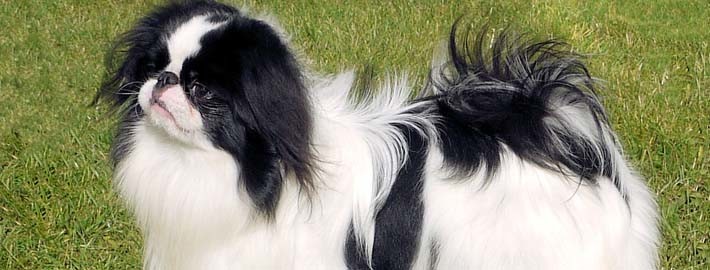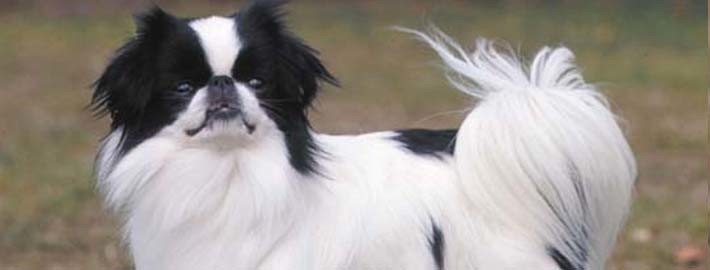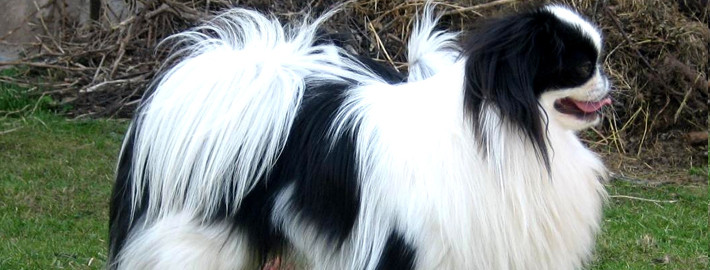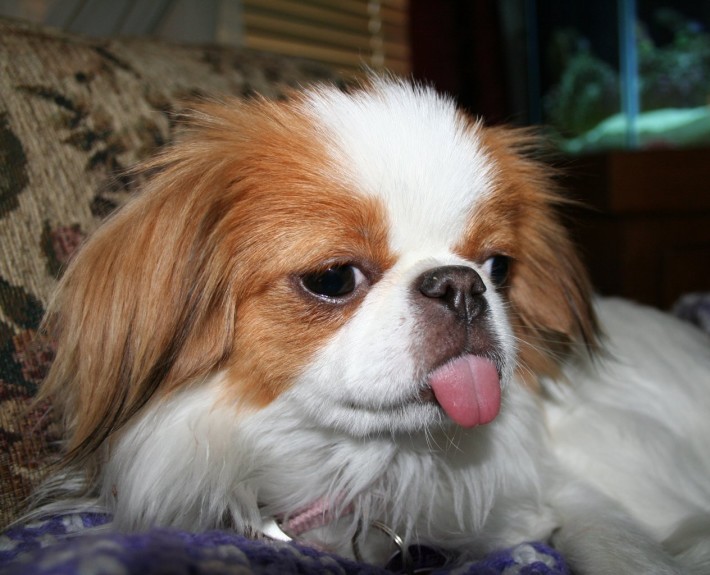What makes the Japanese Chin Unique?
Small, lively and aristocratic, the Japanese Chin is a square-proportioned small dog. It has a bright, inquisitive expression — distinctly Oriental. A small amount of white shows in the inner corners of the eyes, imparting a look of astonishment. Its gait is stylish, lively and light. The single coat is abundant, straight and silky, tending to stand out from the body. The overall appearance is one of Oriental aristocracy. The Japanese Chin is a devoted companion, relishing a warm lap as much as a boisterous game. It is sensitive and willing to please, tending to shadow its owner. It is a friend to all: strangers, dogs and pets. Its playfulness and gentleness make it a good child’s companion for equally gentle children. The breed has been described as almost catlike — some even climb.
Breed Groups
Page Contents
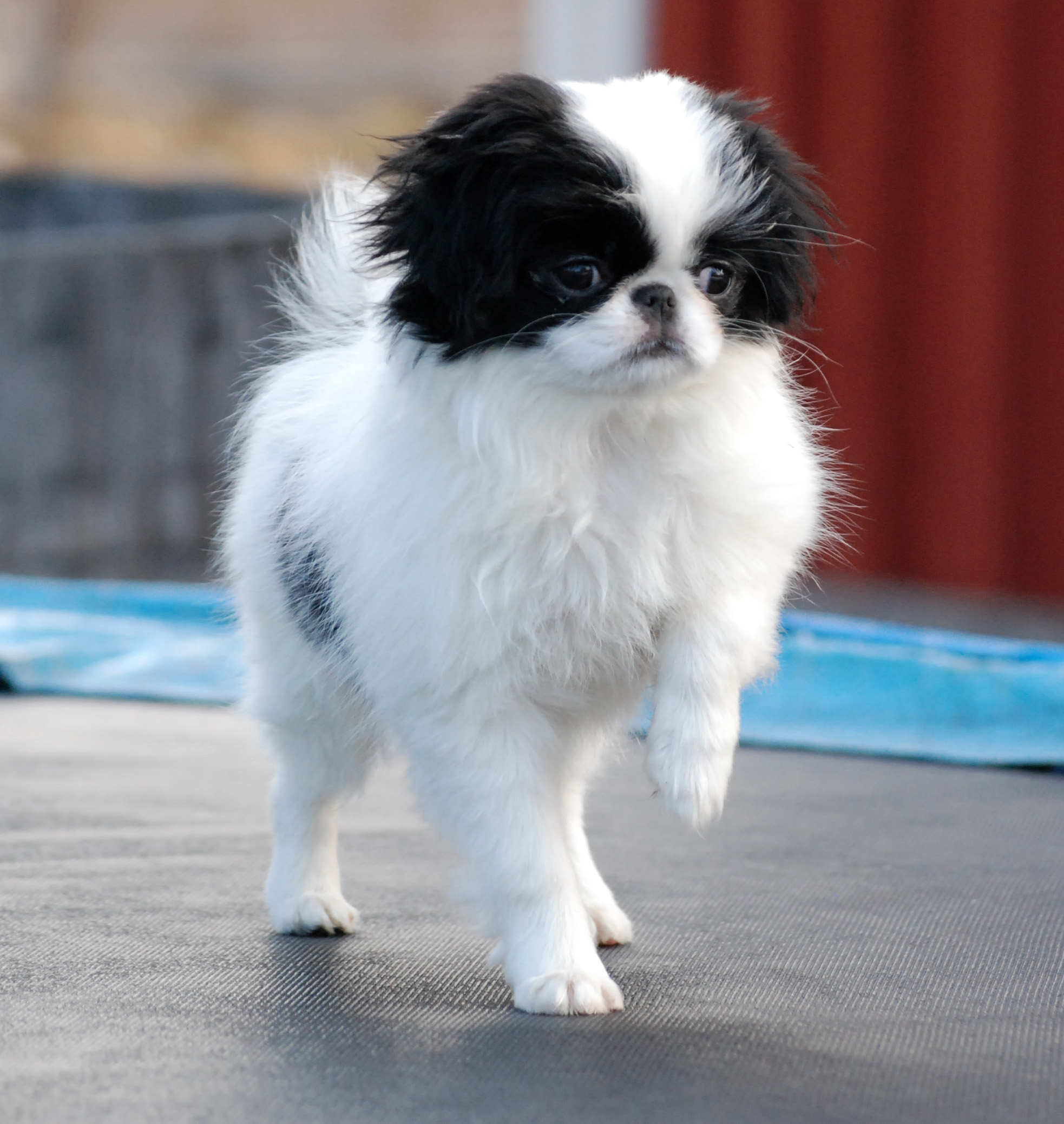
Is the Japanese Chin Right For You?
The Japanese Chin is a bright, alert and playful breed. An affectionate and devoted family companion, this breed loves everyone it is familiar with, but may be reserved around strangers and in unfamiliar situations. Their small size makes them ideal for an apartment, but they still enjoy the opportunity to play in an open yard. Their silky and flowing coat requires twice-weekly brushing. If you are considering purchasing a Japanese Chin puppy, learn more. *Toy Group; AKC recognized in 1888.
*Ranging from 8 to 11 inches tall at the shoulder.
*Companion dog.
In 5 Words
- Alert
- Cat-like
- Loving
- Loyal
- Intelligent
Characteristics
Learn About the Japanese Chin
Description
The Japanese Chin is also called the Chin or Japanese Spaniel. It is a little spaniel whose only bred purpose is to serve man as a companion. The Chin has a large, broad head, large wide-set eyes, and a short, broad muzzle. The ears are small, V-shaped, set wide apart and slightly below the crown of the skull, and well covered with hair. The forehead is quite round. The stop is deep and the muzzle is short and broad. The nose is wide with an extremely short nasal canal. The nose is black in black and white dogs, and in other colored dogs the nose color should match the color of the coat markings. The eyes are protruding, set wide apart, large, round, and dark in color. The bite is slightly undershot. The body height and length are about the same. The front legs are straight and fine boned, with the elbows set close to the body. The tail is set high and carried arched up over the back, hanging to either side of the dog with feathering. The coat is white with colored patches. The patches are often black, but can also be red, lemon, orange, sable, black and white with tan points, or brindle.
Short History of the Japanese
The Japanese chin is an old toy breed that most likely evolved from the Tibetan spaniel. Dogs similar in appearance to the chin have been found on ancient pottery and old Chinese temples. The dogs appear to have originated in China. It is reported that the Chinese Emperor gave a pair of chin to the Japanese Emperor. The first European records of the chin go back to the 1600s when Portuguese sailors presented Princess Catherine of Braganza with some chins as a gift. In 1853, Admiral Commodore Perry gave Queen Victoria a pair of chin after his warships visited Japan. World War I and Japanese earthquakes diminished the numbers of chin in Japan.
No firm records exist as to when the chin first appeared in the United States. When they were first recognized in the States, they were called Japanese spaniels. In 1977, the American Kennel Club recognized them as the Japanese chin.
Temperament
This breed is very intelligent, loving, and pleasant. They are also affectionate, mild mannered, and playful. The Japanese Chin is very adept at mirroring the moods of those around them. They are deeply devoted to their master and love everyone. With their gentle and sensitive demeanor, this breed is best suited for homes with older children. They are good with other dogs and pets. Although they are not an excessive barker, they make good watchdogs. They thrive on being the center of attention. This is a breed that is full of courage with a mind of their own. Graced with an excellent memory, they have definite likes and dislikes and never forget a friend or foe. The Japanese Chin, as a family pet is unrivaled.
Caring for Your Japanese Chin
General Health
The Japanese Chin is prone to some health issues like Heart problems, Eye infections, Respiratory problem etc.
Grooming & Bathing
The Japanese Chin requires daily gentle combing and brushing to keep the coat free from tangles. They must be combed and brushed in a specific manner, so a lesson from a professional dog groomer is recommended. Bathe only when necessary, and dry shampoo occasionally. The eyes and ears need to be cleaned and checked on a daily basis. As is the case in many short-muzzle breeds, the Japanese Chin is prone to respiratory problems. They also have a tendency toward eye infections and heat prostration.
Exercise & Training
The Japanese Chin is much more obedient that most of the other toy breeds. They are eager to please, so training is done quite easily. This breed excels at learning and performing tricks. Since they are sensitive and mild mannered harsh training methods must never be used. They respond best to gentle, loving, fair, and consistent methods. Basic obedience is recommended.

